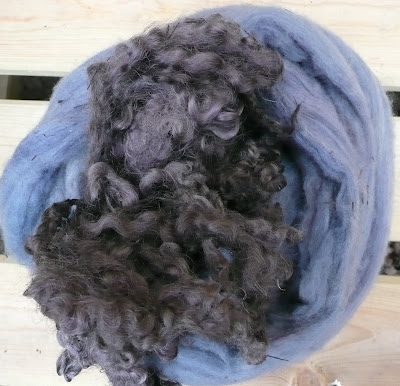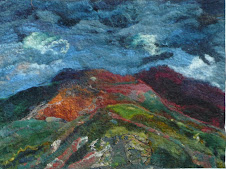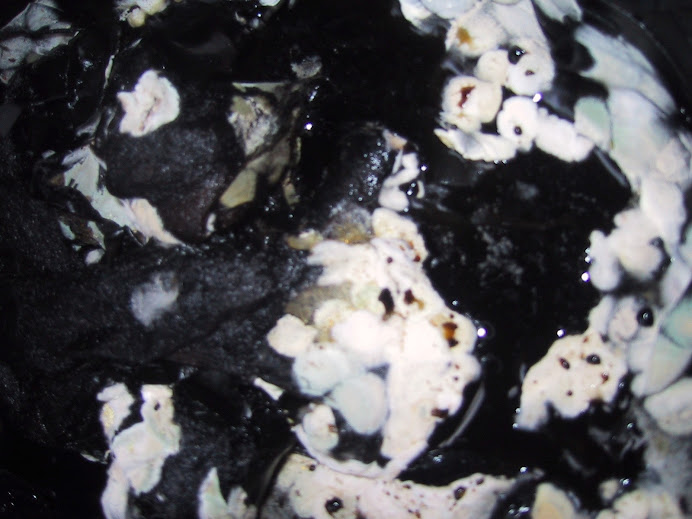Posted by Helen 
Goldenrod in March 2009
 Golden rod in flower August 2008
Golden rod in flower August 2008When we were first planting the dye garden I told Enys I wanted Golden Rod. Much against her inclination as a gardener as golden rod spreads fast and can be difficult to control Enys planted golden rod saying "you want golden rod you will have goldenrod- a whole garden of it". Goldenrod as a dye is a fabulous bright light fast yellow and at the very first dye workshop I ever ran someone gave us huge amount of goldenrod which we over dyed in Indigo when it gave a glorious emerald green. So obviously I wanted goldenrod and if I don't have a garden of it the original two plants have spread very considerably and so last week I actually cleared goldenrod which was threatening to choke a dwarf willow and which was looking a bit beleaguered. Enys on a waste not want not principle said to me sternly "are you going to try dyeing with that?" So of course I did as I was told and tried the immature plants for dye. Normally Goldenrod is one of those plants that you dye with when in full flower. The flower heads on their own give the clearest yellow I think but the whole plant gives a golden yellow with perhaps the slightest of green over tones.
 Yellow from mature Golden Rod September 2007
Yellow from mature Golden Rod September 2007I had cleared perhaps a dozen plants about a foot high so I chopped them up very roughly covered with water and
heated very slowly and gently for about 12hours. The water was a deep brown to my surprise so I drained off the dye bath and repeated the extraction.
Into the resulting dye bath I put my ubiquitous Teeswater fleece and a 100 g of 18.5micon merino tops which has been in a very weak indigo vat and was dyed a very pale blue with lots of white areas. Both had been mordanted in 8 % alum 7% Cream of tartar.
The Teeswater took the colour first turning a soft pinky purple while the merino looked a rather unpromising grey. After 6 hours or so the merino began to look a greyish purple. Gingerly I added a drop of ammonia to see whether it would brighten the colours and the whole bath went a deep green. This change is rather reminiscent of the colour from elderberries which change from purple to green (and back again) with a pH change.
The resulting colour has proved very difficult to photograph looking blue or grey or even purple against different background.
To my eye it looks a dark turquoise, my husband ( red green deficient in his vision) says to him it looks green. Looking at the merino across the garden it look a dark grey with a green tinge. The odd thing is in all the photos I have taken I cannot get one that looks green. Whatever the colour is it is somewhat a surprise to get it from a plant
The chemicals in the plant must change significantly as the plant matures.But why?


































